How farmer uses biodynamic approach to establish crops
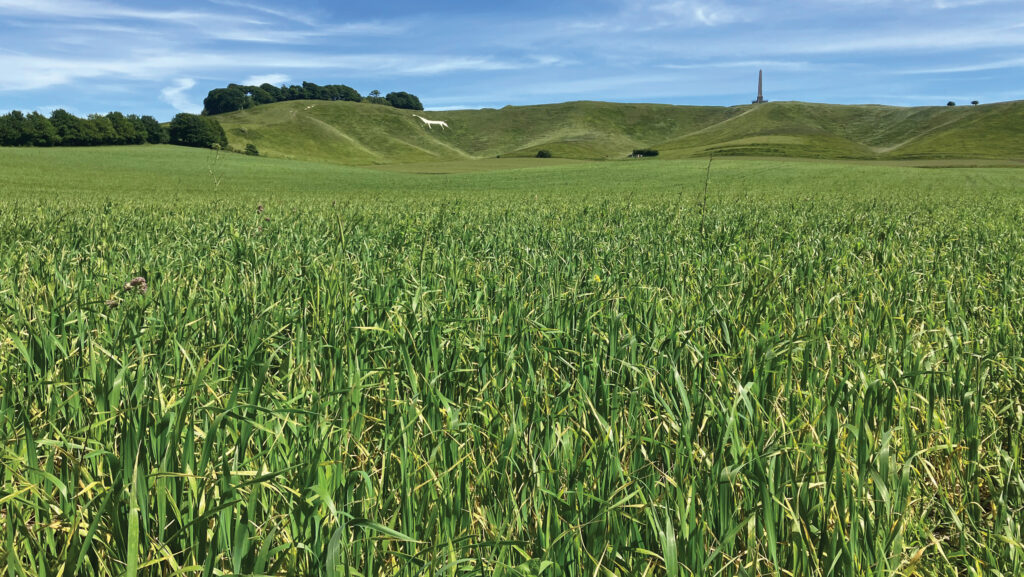 Biodynamically grown wheat © MAG/Emma Gillbard
Biodynamically grown wheat © MAG/Emma Gillbard For the past two decades, Wiltshire mixed farmer Richard Gantlett has been using the power of biodynamic farming to grow crops completely free of chemicals and without the plough.
With a choice of five low-disturbance cultivators and a pair of lightweight seed broadcasters, Richard sows the seed into a blanket of soil, to promote uniform establishment and reduce weed burden.
Rather than applying conventional chemicals, he uses unique biodynamic preparations which include carefully composted cattle manure to enhance soil life and keep plants balanced and free of disease.
See also: What to consider if tempted to drill winter wheat early
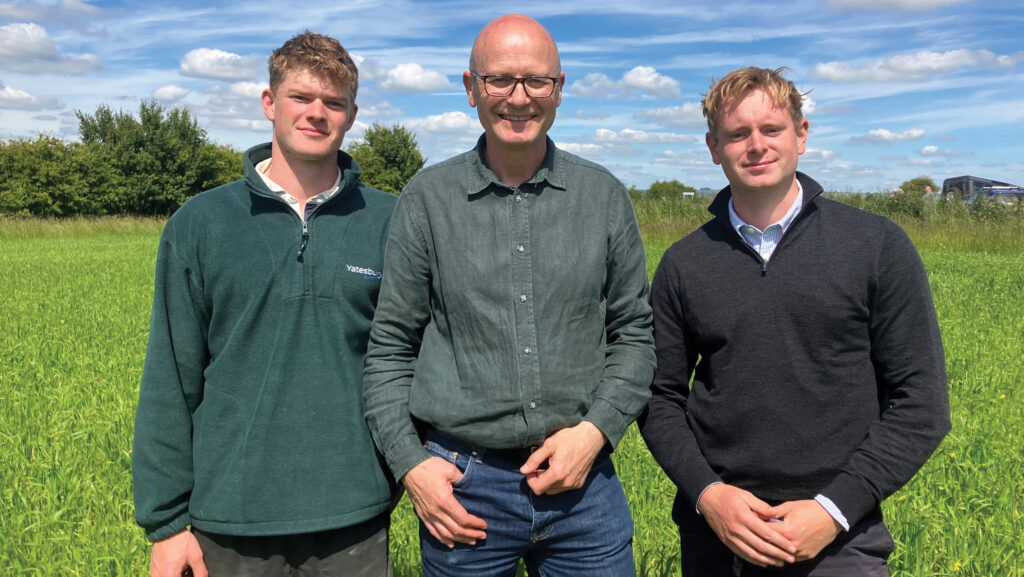
Richard Gantlett (centre) with sons Zac and Angus © MAG/Emma Gillbard
Soil, and the growing life within it, is key to his farming system. That’s why his rotation is based on a three-year fertility building phase grazed by cattle, with the farm now fixing 10 times more carbon than it emits.
Farming as one
All 650ha at Yatesbury House Farm, near Calne, Wiltshire, are treated as one living organism – be it woodland, hedges, crops or livestock.
Biodynamic farming builds on the principles of organic farming, but takes this a step further by treating the entire farm environment as one, with respect to ecological and cosmic influences of the natural world.
“Biodynamic farming is all about farming in the service of life.
“We no longer want to be at war with the environment, trying to destroy insects, fungi and bacteria. Instead, we want to be part of that environment, aiming for vitality, healthier soils and improved food nutrition,” he says.
Richard’s journey into biodynamics started in the mid-1990s, when he noticed soil quality degrading as a result of the overuse of fertilisers and agrochemicals.
“Soils were compacted and the colour was noticeably paler with plateauing yields to show for it, which started to make me think how we could continue farming long term like this,” he says.
Farming system changes
“We were very cost focused when we were farming conventionally. But this high input and high output approach was having a detrimental impact on the very soil in which we grew our crops.”
This proved a pivotal moment in Richard’s farming career, and from this moment he realised his farming methods had to change, and so too his reliance on chemicals.
In 1998, Richard started the organic conversion, with the aim of bringing life back into soils and cutting chemical use.
It was Australian farmer Alex Podolinsk that introduced Richard to the effect of biodynamic methods on soil, plants and people.
He met Alex on a study tour visiting farms and vineyards in France where conventional, organic and biodynamic vines were growing alongside each other.
Here, he could see the stark difference between the systems and the power of biodynamic farming struck home.
Richard then visited a German family operating a min-till system without glyphosate, which ignited his interest to do the same.
So, in 2003 the plough was sold and Richard began working with lighter, smaller machines to reduce compaction, promote crop establishment and increase crop competition with weeds.
Benefits of applying biodynamic preparations
Two different types of biodynamic preparations are applied to cereal crops to promote crop health and provide a source of nutrition.
These preparations also enhance soil biodiversity, and thanks to their unique composition promote a functioning microbiome.
The first preparation is a carefully composted cattle manure, known as ‘500’. This is contained in cow horns and buried in the soil over winter for it to transform. The mix is later diluted and applied as a foliar spray.
The 500 is meant to be a powerful means for structuring soil, stimulating microbial activity and promoting growth and root development.
The second is a silica-based spray known as ‘501’. It is applied 10 days after the 500 to counter the effect of “lush” growth, which can otherwise make plants weak and prone to disease.
“The 501 brings stability back to the plant and has the ability to correct any overgrowth. It provides a more vertical growing position for the leaf, which in turn brings in more light,” says Richard.
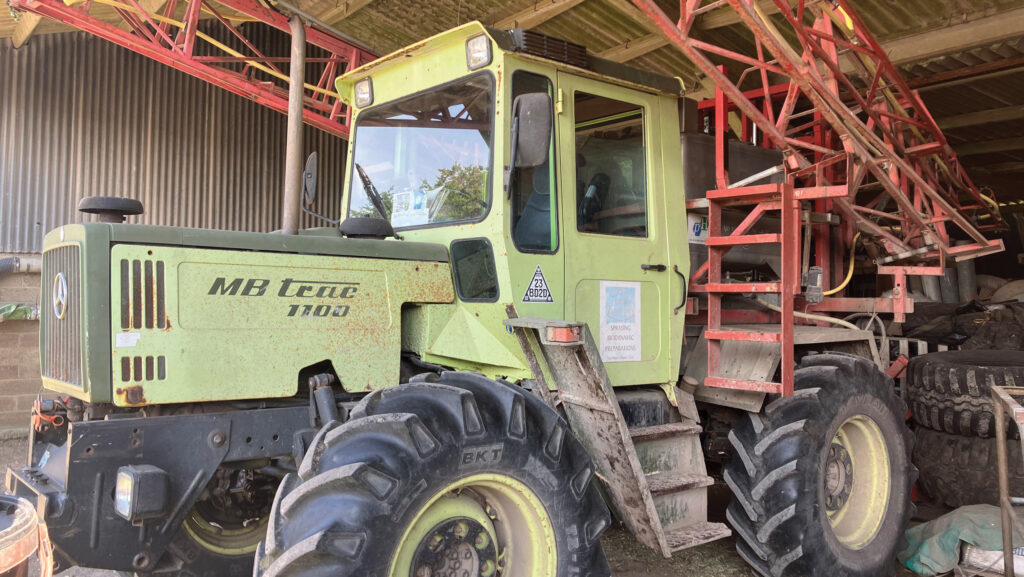
The two types of biodynamic preparations are foliar-applied to cereals © MAG/Emma Gillbard
“The sprays can increase the quality of cereals, anecdotally, with increased grain protein quality and improved seed germination for the following crop,” he says.
This year, the 500 was applied at ear emergence, but optimum timings are very season dependent.
“Timings vary hugely according to soil moisture and weather. Soil moisture is essential to its efficacy as it’s working with the soil. This should be accounted for on the lead up to spray applications.”
Richard buys in the composted product from biodynamic contacts in Europe before home-brewing it into a solution.
He warms the compost with 1,000 litres of water until it reaches 35C. The mix is then stirred for one hour, both counter and anticlockwise, to get as much oxygen in as possible. It is then sprayed out, which takes about an hour to over 30ha.
“When I first started farming biodynamically, I wanted to ensure optimum applications. I didn’t want to risk making my own compost mixes in case it went wrong.”
Richard does, however, create his own compost. He beds cattle on woodchip – mainly from the farm – over winter as he finds it more absorbent than straw.
He strategically reuses the bedding for a second winter by drying out the used woodchip in the sheds over summer.
Eventually, it is composted in the fields where the biodynamic compost preparations help to transform it, before being spread on the pasture to further benefit the soil.
Rotation and cultivation
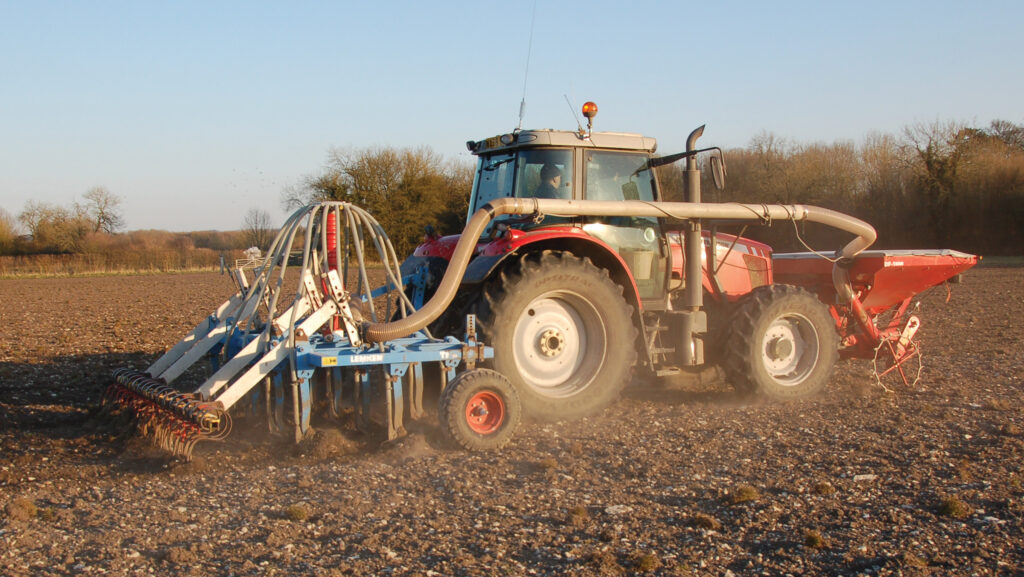
The 2D sower simply lifts the soil up and places the seed below © Richard Gantlett
Richard went on to develop two innovative seed broadcasting units to evenly establish crops and naturally enhance crop competition, in what he refers to as 2D and 3D sowing
“It sounds technical, but in reality, the 2D sower cultivator simply lifts the soil up and places the seed below,” he says.
“The 3D sower takes it a step further and mixes the seed in a blanket of soil. This is also known as network seeding.”
Rather than growing the crops in lines which provide more opportunity for weeds to take hold, cereal crops are evenly distributed in the soil to reduce weed burden and promote rapid seedling establishment.
The technique also maintains soil moisture within the seedling zone, with a small layer of dry soil on the soil surface keeping moisture where the seeds need it.
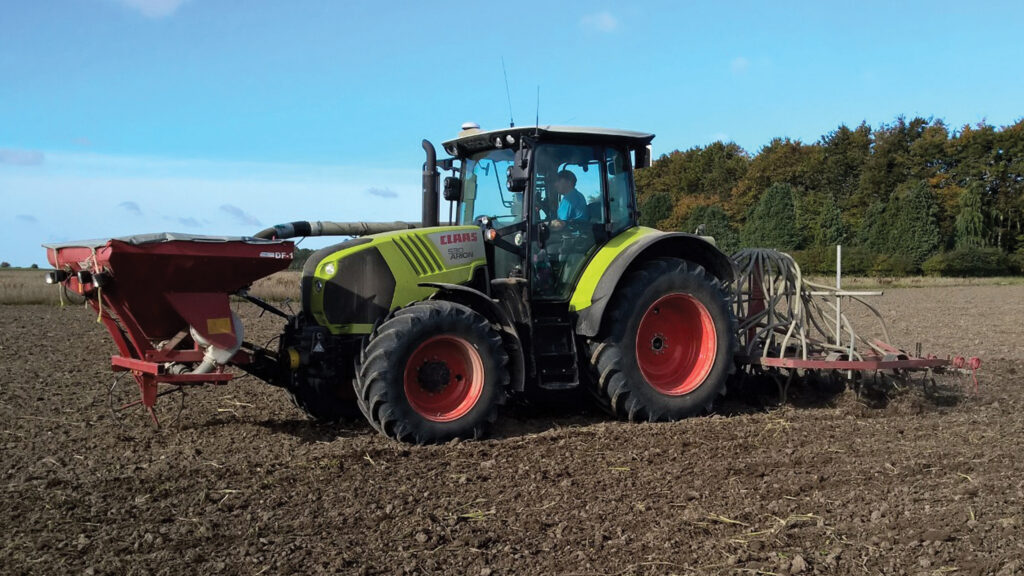
Richard’s 3D sower design mixes the seed in a blanket of soil © Richard Gantlett
Richard operates a broadcaster cultivator at the rear of the tractor and seed hopper on the front.
A spring tine cultivator is used in the autumn to avoid smearing soil, with a harrow modified to the back to level out the soil.
“Once the crop has been established, weed control is complete and the farm gate is shut except for two applications of biodynamic preparation sprays,” says Richard.
He grows heritage winter wheat blends, spring wheat, spelt, rye, barley and oats.
“Modern wheat cultivars are not that competitive,” he says.
“We find heritage cultivars and spelt, on the other hand much better which is why the 3D sowing technique is so important to get crops off to the best start and minimise competition from weeds.”
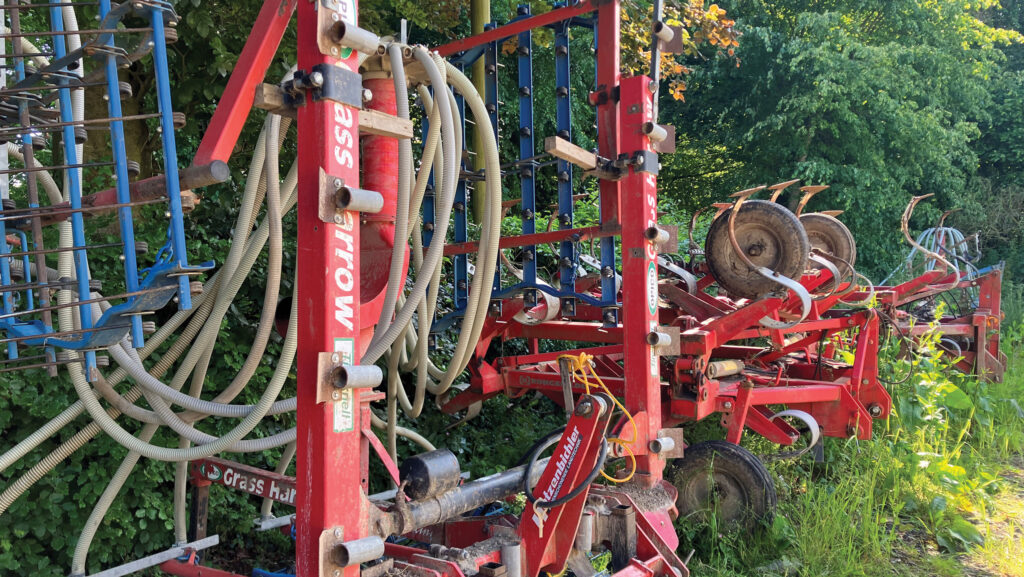
A choice of five cultivators and a pair of seed broadcasters are used to establish crops © MAG/Emma Gillbard
Destruction of diverse leys
Diverse three-year leys are key to building soil fertility at Yatesbury Farm, but incorporating this into the arable rotation without ploughing or glyphosate requires a focus on cultivations.
Three to four different cultivation passes are used to destroy the ley, where soils are worked in different angles across the field. The soil is worked to about 7cm deep.
“Initially, I worked the soil relatively shallow but as my confidence of the system grew, I realised I could work the soil slightly deeper as cultivating is not only important for weed control, but also for letting air into the soil,” he says.
The farm has five different cultivators, each with different weights, widths, legs and tine lengths which are used to destroy the ley and act as cultural weed control.
“Three passes with the main cultivator is the same cost as ploughing,” says Richard
Cultivation is also a natural nitrification process as it releases nutrients into the soil and makes them more readily available for crops.
“Since starting out on the move to biodynamic farming, I’ve learnt a lot and made many mistakes. It does take time to change.
“Our costs are now lower and it’s easier to make a profit because there’s less risk involved. The process is hugely rewarding and I’ve enjoyed every moment,” he says.
100 years of biodynamic agriculture
Biodynamic farming reached its 100th anniversary this year – a celebratory milestone in the world of sustainable agriculture.
The farming approach originates from 1924, when Austrian philosopher and scientist Dr Rudolf Steiner became concerned over the declining health of soils as a result of industrial farming practices, and so introduced a new agricultural philosophy.
Biodynamic farming emphasised the importance of considering farms as holistic ecosystems, integrating ecological, ethical, and spiritual principles.
Since Rudolf’s introduction of the principle 100 years ago, biodynamic farming has grown from a small, pioneering movement into a global influential farming approach.
Today, biodynamic certification is represented by the Demeter label and is recognised worldwide as a mark of quality and integrity in sustainable agriculture.

